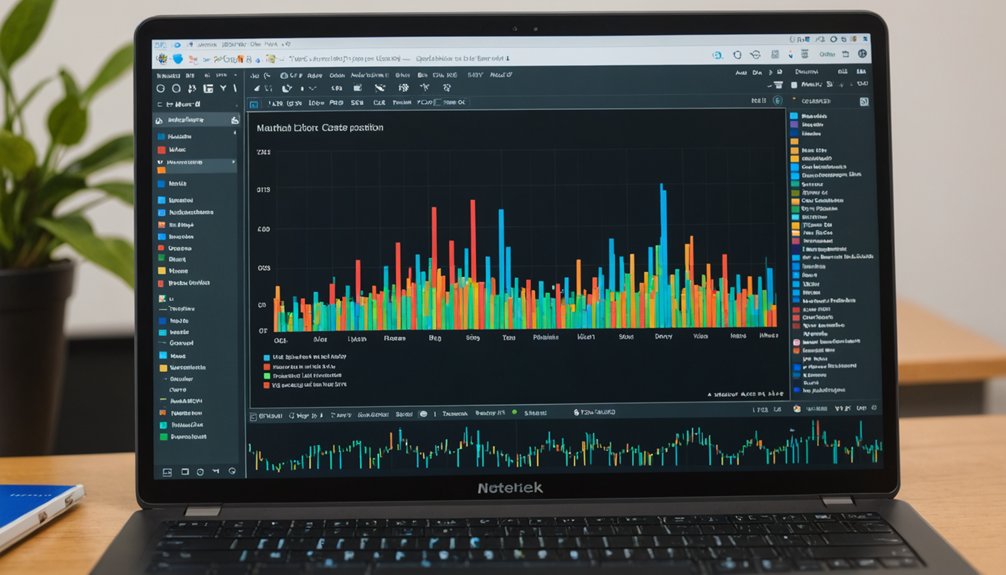Transfer learning lets you use pre-trained models for new tasks. It's a huge time-saver. Start by selecting a model like ResNet or BERT, then remove the output layer and freeze existing weights. Add new layers specific to your target task, and fine-tune as needed. This approach requires less data, cuts computational costs, and often improves performance. Different strategies exist for various scenarios. The right implementation approach makes all the difference.

Imagine training a machine learning model from scratch every single time. Sounds exhausting, right? That's where transfer learning comes in. It's a technique that takes an already-trained model and applies it to a new, related task. No more starting from zero. No more wasting precious computational resources. It's like getting a head start in a race while everyone else is still tying their shoelaces.
The concept is surprisingly straightforward. Researchers select a pre-trained model – something like ResNet for images or BERT for text – and modify it for their specific needs. They strip away the final output layer, freeze the weights of the pre-trained sections to preserve all that valuable learning, then add new layers tailored to the target task. Smart. Efficient. Practical. The model evaluation phase is crucial to ensure the transferred knowledge performs well on the new task.
Transfer learning shines brightest when data is scarce. A model trained on millions of images can help classify a few hundred specialized medical scans. The pre-trained knowledge transfers over, carrying with it patterns and features already learned. This approach works across multiple domains. Image classification. Natural language processing. Even reinforcement learning for decision-making systems. Problem definition is essential before selecting the appropriate pre-trained model for your specific use case.
Transfer learning eliminates the data barrier, transforming specialized domains with pre-trained insights from the digital universe.
The benefits are obvious. Training time drops dramatically. Performance improves. Less data needed. Lower computational costs. It's a win across the board. No wonder it's become standard practice in the industry.
Different strategies exist for different scenarios. Transductive transfer learning works with related domains sharing similar characteristics. Inductive approaches handle different tasks within the same domain. There's even unsupervised transfer learning for when labeled data isn't available.
Implementation follows a clear pattern: select an appropriate pre-trained model, remove its output layer, freeze pre-trained weights, add custom layers, then fine-tune the system. Models like VGG, MobileNet, and transformer architectures are readily available from online repositories. Proper data preparation is crucial for achieving optimal results when implementing transfer learning techniques. Keep in mind that using data augmentation techniques can significantly enhance your transfer learning model's performance, especially when working with limited datasets.
Transfer learning isn't just a shortcut. It's a fundamental shift in how we approach machine learning problems. Why reinvent the wheel when you can borrow someone else's and customize it? That's just common sense.
Frequently Asked Questions
When Should I Avoid Using Transfer Learning?
Transfer learning should be avoided when domain differences are significant. Period.
If source and target datasets barely relate, why bother? It's also useless with poor pre-trained models—garbage in, garbage out.
Limited computing resources? Skip it. The data's too different? Same deal.
When you've got plenty of data and specialized tasks that need custom features, training from scratch wins.
Privacy concerns exist too. Sometimes, it's just not worth the hassle.
How Does Transfer Learning Affect Model Interpretability?
Transfer learning often makes models less interpretable. Pre-trained components add complexity—they're black boxes with hidden decision processes.
Sure, they boost performance, but at what cost? Techniques like LIME and SHAP values help peek inside, but they're imperfect solutions.
The trade-off is clear: better accuracy versus transparency. Researchers are working on this problem.
For now, users must balance predictive power against their need to understand model decisions.
Can Transfer Learning Worsen Performance on Certain Tasks?
Transfer learning can definitely worsen performance. It's called negative transfer. Happens when source and target domains are too different. Makes sense, right? Models trained on cats won't help much with financial data.
Data quality issues contribute too. When domains clash, features mean different things across contexts.
Solution? Careful selection of pre-trained models, proper layer freezing techniques, and low learning rate fine-tuning. No magic bullet though—sometimes traditional learning works better.
What Are Computational Trade-Offs of Transfer Learning?
Transfer learning demands heavy computational resources. Big models like ResNet152? Powerful, but resource-hungry. The trade-offs are stark.
Training from scratch takes days, even weeks. Not everyone has that luxury.
Fine-tuning specific layers helps. So does knowledge distillation—cutting compute costs by 40-60%. LoRA only updates some parameters, saving resources.
Bottom line: developers must balance performance against hardware limitations and budget constraints. Sometimes, you just can't afford that fancy model.
How Does Transfer Learning Compare to Training From Scratch?
Transfer learning crushes training from scratch on efficiency.
Less data needed. Way faster training times. Lower computational costs. Not rocket science.
But context matters.
Training from scratch can win on specialized tasks where the pre-trained model doesn't quite fit.
Transfer learning shines when labeled data is scarce. The similarity between source and target tasks? Critical for success.
Choose wisely. The trade-offs are real.




